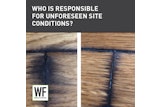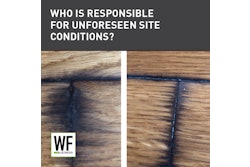With the recession wreaking havoc on revenue, businesses from coast to coast are reducing employment rolls to control operating costs. Too often, though, terminations are carried out in ways that spark litigation.
Have a Strategy
Discharged employees may bring two types of lawsuits. The first alleges a straightforward legal failure: Perhaps the employer has ignored a written or oral employment contract, or violated public policy in firing people for undertaking jury duty or some other federal or state mandate.
Discrimination lawsuits are more common in a recession; many layoffs present the appearance of bias against protected groups even when no such unfairness was intended. The plaintiffs assert that terminations were influenced by age, sex, race, religion, national origin or disability. Such cases require more time and cost to defend—and employers can be hit with huge punitive damages.
You can avoid this trap by defining the goal of your workforce reduction, then ensuring your terminations support that goal.
"Probably the most important thing is to set an objective," says Joseph P. Harkins, a partner in the Washington, D.C., office of San Francisco-based Littler Mendelson, the nation's largest employment law firm representing management. If you're concerned with only a straightforward downsizing, rank employees and keep only the best. If you're eliminating a certain service to better focus on your core offerings, keep only the employees that can support this core.
Probably the most common mistake is to mix the two objectives or to not have any goal beyond some panicky cost control, Harkins says. In such cases it's too easy to terminate individuals without sufficient thought and without adequate documentation supporting the criteria used.
That carries strategic and legal risks: Six months down the road you may realize you let the wrong people go. This opens the door to charges by terminated employees that your real goal was discrimination: You wanted to rid your workplace of individuals with characteristics protected by federal and state law.
Keep Records
Keep careful records that show how your terminations support your goal. "If you do get hit with a wrongful discharge suit you can say, 'Employee A had a better set of skills than Employee B for the service we were planning to focus on in the future,'" Harkins says. "Or, 'I needed people who had two skills and Employee B was less versatile.' Documenting this thought process at the time will make your case more credible later."
Once you have decided who to let go, assess the makeup of the departing group. Does it have a higher proportion of individuals with protected characteristics than your surviving workforce? If so, your layoff would seem to have what attorneys call a "disparate impact," and that can be evidence of discrimination. Disparate impact can be harmful not only in terms of costly litigation but also in the diminished morale of people left behind and even in tarnished customer relations following news reports of discrimination lawsuits.
Treat People Well
Treating people well during termination is the right thing to do from the human point of view. It's also smart legally. Fact is, people angry about how they were treated on the way out the door often sue their ex-employers.
Indeed, attorneys suggest going the extra mile and taking a proactive stance in helping employees move on. Consider arranging for outplacement to get people focused on the future and getting on with their lives. People left unassisted are more likely to file a lawsuit as they brood about what happened.
Offer Severance Agreements
One way to help ensure you do not become the target of wrongful discharge lawsuits is to ask departing employees to sign documents which release your firm of any liability in exchange for a severance package.
"Many times reductions in force (RIFs) are done without severance packages and corresponding releases," Harkins says. "This is usually a mistake because most people are not looking for huge packages. They just want some transition money to take care of their families until they come up with something in a few months."
Recessions happen. They are a fact of business life. Fortunately, they don't last forever. You want to respond to the recession in a way that builds bridges to the future, and that means conducting a layoff ethically and professionally.
Business Q & A
by Jim Blasingame
Q: I run a flooring company with 10 employees. Is there anything I can do to keep OSHA off my back?
A: Yes. OSHA seems to be interested in helping small businesses head off problems, instead of catching them doing something wrong. Under a special program targeted at small businesses, you can request a free on-site inspection. During this visit, OS HA inspectors will: • Discuss general approaches or options for solving any safety or health problems they identify, as well as suggest or provide training and education for your employees.
• Not issue any citations or propose penalties for OSHA violations.
• Be done with you for a year. You will be excluded from any further OS HA inspections for one year.
• A word of caution: Inviting OSHA in is no guarantee your workplace will pass inspection and you may have to spend money to come into compliance.
Jim Blasingame is the creator and award-winning host of the nationally syndicated radio/Internet talk show, "The Small Business Advocate," and author of Small Business is Like a Bunch of Bananas and Three Minutes to Success. Find Jim's show and more at www.SmallBusinessAdvocate.com, plus instant answers to your questions at his small business knowledgebase, www.AskJim.biz.

































